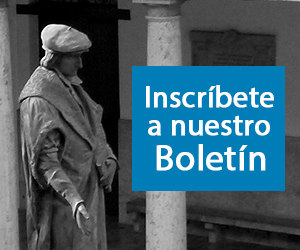Autor: Valentín Navarro Caro. Profesor del Grado en Derecho. Universidad del Atlántico Medio. valentin.navarro@pdi.atlanticomedio.es
Resumen: La transmisión “mortis causa” de la unidad empresarial es uno de los grandes problemas que existen en los ordenamientos jurídicos que contienen un sistema de legítima imperativa. Es por ello que el Derecho siempre ha articulado sistemas que permitan conservar dicha unidad, dando libertad al empresario-causante para designar a un sucesor. Un ejemplo de esto lo encontramos en el art. 1056.II CC. Sin embargo, la vinculación de estos mecanismos a los controles tradicionales del Derecho sucesorio los hace, en ocasiones, inoperantes. Para evitar esto, el Derecho italiano introdujo el llamado “patto di famiglia”, que traslada la sucesión de la empresa al ámbito de los contratos, buscando dar más libertad al causante testador. El presente artículo compara esta figura del Derecho italiano con el art. 1056.II CC y estudia la posibilidad de su implantación en nuestro ordenamiento jurídico.
Palabras clave: sucesiones; empresa; legítima; autonomía privada; derecho de sucesiones internacional
Abstract: Within forced heirship legal systems, «mortis causa» transfer of business units constitutes a paramount issue. Because of this, those systems have traditionally delineated legal instruments allowing for the preservation of these units, generally entitling the owner to freely designate an heir to them. One example of this is found in Article 1056.II of the Spanish Civil Code. Nevertheless, the resemblance these instruments bear to other constraints with deep roots in Succession Law occasionally renders them inefficient. In order to avoid this inefficiency, Italian Law introduced the so-called «patto di famiglia» (family pact), which shifts «mortis causa» disposition of business units onto the realm of contracts, thus granting greater freedom to the testator. The present article aims to compare this Italian legal institution and Article 1056.II of the Spanish Civil Code, as well as to evaluate the possibility of implementing of the former in Spanish Law.
Key Words: inheritance; business; forced heirship; private autonomy; international succession law
Sumario:
I. INTRODUCCIÓN.
II. LA TRANSMISIÓN “MORTIS CAUSA” DE LA EMPRESA FAMILIAR EN EL CÓDIGO CIVIL ESPAÑOL.
1. El segundo párrafo del art. 1056 CC.
2. Problemas no resueltos en la transmisión “mortis causa” de la empresa familiar.
A) La divisibilidad o indivisibilidad del bien objeto de la conmutación.
B) El contenido de la conmutación: orden o facultad.
C) El interés a proteger.
D) El beneficiario de la empresa, explotación económica o paquete de participaciones societarias.
III. “IL PATTO DI FAMIGLIA” DEL DERECHO CIVIL ITALIANO.
1. Aspectos generales.
2. El “patto di famiglia” y el art. 1056.II CC.
IV. A MODO DE CONCLUSIÓN: LA POSIBILIDAD DE UN “PATTO DI FAMIGLIA” EN EL ORDENAMIENTO CIVIL ESPAÑOL COMÚN
Revista indexada en SCOPUS, REDIB, ANVUR, LATINDEX, CIRC, MIAR
Referencia: Actualidad Jurídica Iberoamericana Nº 16, febrero 2022, ISSN: 2386-4567, pp. 1694-1715.






